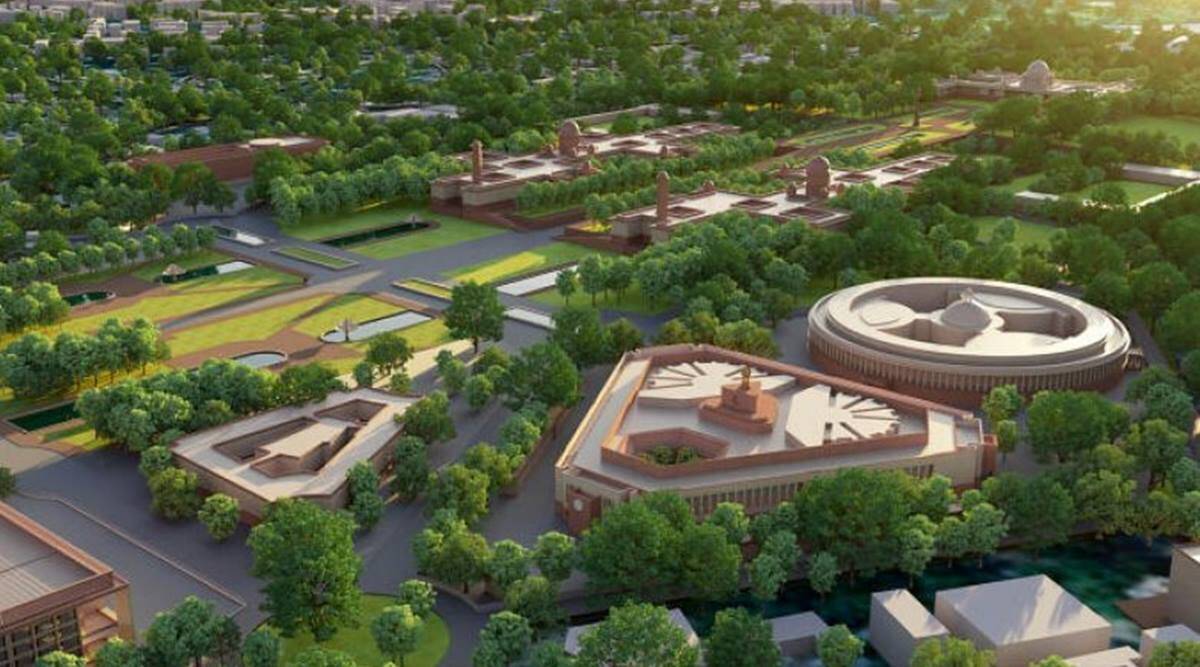While India tackles the Covid19 pandemic and is witnessing the farmers protesting in the bone-chilling winter and rains, the central vista project gets clearance from the Supreme Court. While on one hand, the court laments about the burden of cases and PILs, on the other hand, the court does find time for clearing a project which would cost the public exchequer around Rs 11000 to 14000 crores as per estimates. Some estimates also state that the cost can shoot well above Rs 20000 crores.
The Supreme Court on Tuesday approved the Central Vista re-development project, in a 2:1 verdict. The apex court said in its judgment that the exercise of the power under the Delhi Development Authority (DDA) Act was valid. The court also stated that the recommendations of environmental clearance by the Ministry of Environment were proper.
The three-judge bench hearing the case comprised Justices Dinesh Maheshwar, A M Khanwilkar, and Sanjiv Khanna. Justice Khanna, who challenged the project, wrote, “Despite nationwide lockdown and objections, NOC was given to the project by the Central Vista Committee by way of a meeting held via video conferencing and without giving any reasons. The meeting was headed by ADG Works who has experience only in road maintenance,” as reported by Bar and Bench.
The SC was hearing a batch of petitions that questioned whether the project complied with land use and environmental regulations peculiar to the area which houses the Parliament and Central Secretariat buildings.
In November, the bench had reserved the verdict. On December 7, last year the top court had allowed the Centre to proceed with the foundation stone-laying ceremony for the Central Vista project on December 10 after the government assured it that no construction or demolition work would commence till the apex court decides the pending pleas on the issue. The Centre had told the bench that there would be only foundation stone-laying ceremony, and no construction, demolition or felling of trees would be done for the project as of now.
The Central Vista revamp, announced in September, 2019 envisages a new triangular Parliament building, with seating capacity for 900 to 1,200 MPs that is to be constructed by August, 2022 when the country will be celebrating its 75th Independence Day.
Defending the project, the Centre had told the Apex court that the existing Parliament building had many deficiencies, such as inadequacy of space, structural weaknesses, and security issues. GOI said that the Central Vista project will save the public exchequer Rs 1,000 crore that the Government currently pays as rent for many of its offices. The Central Public Works Department (CPWD) had submitted that the current strength of the Lok Sabha has remained at 545 on delimitation carried out on the basis of the 1971 Census and that it is likely to increase substantially after 2026 when the cap ends. The GOI had submitted that the decision to have a new Parliament building has not been taken in haste and no law or norms have been violated in any manner for the project.
The government’s latest proposal for the redevelopment of Central Vista before an expert panel of the Ministry of Environment and Forest dropped the proposed new Prime Minister’s Office from the plan, while revising the estimated cost from ₹11,794 crore to ₹13,450 crore.
The Central Public Works Department’s proposal for terms of reference, which is a step before the application for environment clearance, was discussed by the MoEF Expert Appraisal Committee recently. A source said that the CPWD was given suggestions and asked to address the issues raised in representations from the public.
The CPWD on December 9 had submitted a proposal for TOR for the “development/redevelopment of Common Central Secretariat buildings and Central Conference Centre along with Prime Minister’s Residence, SPG Building, and Vice President’s Enclave,” with a total built-up area of 17,21,500 square metre and demolition of 4,58,820 sqm. This plan did not include the proposed PMO that was mentioned in an earlier version of the proposal submitted in November. It was said that there were issues of pending land-use change and litigation. The CPWD had first submitted a plan for the 10 secretariat buildings and conference centre and the TOR which was approved in October. Then, the CPWD applied for amending the TOR to include the PMO, PM’s residence, SPG building, and V-P’s Enclave, but the EAC in its meeting on November 25 returned the proposal. The EAC asked the agency to “refrain from piecemeal approach” and apply again with an “integrated approach,” according to the minutes of the meeting.





